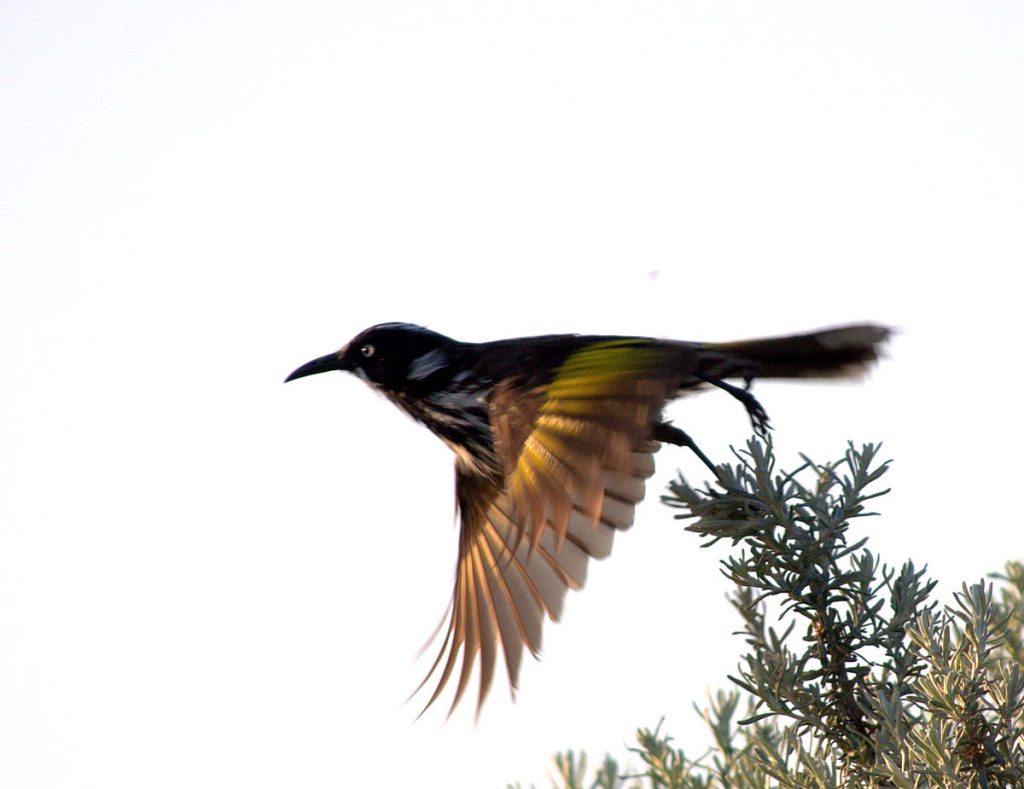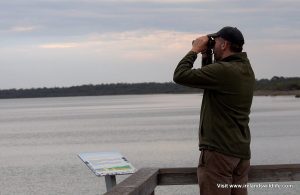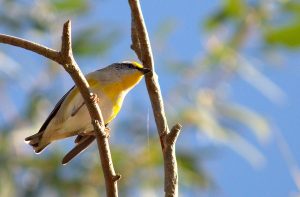Watching wildlife when travelling can be an exhilarating experience, but it can also be challenging. In this feature IW Founder, Calvin Jones, takes a look at some of those challenges, and how you can overcome them on your next wildlife trip.

For any wildlife enthusiast one of the real highlights of travelling has to be the opportunity to see new things. Whether it’s a weekend city break, a two week holiday or an epic travel adventure, the chance to explore unusual habitats and experience some of the unfamiliar wildlife they harbour adds an exciting new dimension to any trip.
But the differences that make travelling such a thrilling prospect for the wildlife lover also introduce challenges. At home you have a lifetime of experience to draw on. You know what to look for and where and when to look for it. But when you travel much of that hard-earned knowledge and experience is rendered almost inert.
I experienced this first hand again recently when I arrived in Western Australia. It’s hard to imagine a place more different to my local stomping ground in West Cork. All of the sights, sounds and smells were unfamiliar: I could hardly recognise anything.
When everything is so new and different it forces you to get right back to basics, to revisit the fundamental wildlife watching skills we so often take for granted at home… and that’s a good thing.
Back to wildlife-watching basics
While there are always notable exceptions that are easy to identify (galahs and laughing kookaburra are pretty easy to recognise), most unfamiliar birds and animals can be tricky. You simply don’t know which species occur where, what type of habitat they prefer and a host of other details that you automatically know at home. Then when you do see something, often fleetingly, you don’t know which key characteristics to focus on to help you work out what it is.
It’s a bit exasperating at times, but discovering and learning new things is also exciting. Here are a few tips to help you get to grips with wildlife on your next trip away from home.
Do your homework
 You’re not going to find out everything you need to know before you leave home. In fact you’ll glean a lot of the info and pretty much all of the insight “on the ground” once you get there. However, the more homework you do before you leave, the better prepared you’ll be when you arrive.
You’re not going to find out everything you need to know before you leave home. In fact you’ll glean a lot of the info and pretty much all of the insight “on the ground” once you get there. However, the more homework you do before you leave, the better prepared you’ll be when you arrive.
- Research online — use a search engine to find wildlife related websites in the areas you’re visiting, visit local birding and wildlife group sites to find out what they’re seeing and where. Check out online reviews of wildlife trips and tours, or use social media to find out more. There’s a rich seam of information out there you can tap into.
- Use your library — from travel guides to wildlife field guides your local library can be a great place to find out more about your destination and its wildlife before you leave home.
Take your time
It’s always a good idea to take things slowly when you’re watching wildlife. The more time you spend looking, inevitably the more you’ll see.
That’s doubly important when you’re looking for and at wildlife that’s unfamiliar to you. Quite often a fleeting glimpse won’t be enough to identify what you’ve seen, but a bit of patience will often be rewarded with clearer views and behaviour that will help you work out what exactly you’re looking at.
Allowing enough time also means you can really enjoy the wildlife and immerse yourself in the experience, rather than constantly rushing from place to place.
There’s always a compromise here… especially if you’re on a tight schedule, or are travelling with family or friends who don’t share quite the same enthusiasm as you for hanging around in the wilderness… but do try and give yourself as much time as you can. It really will pay dividends.
Good optics are key
 If you’re serious about great wildlife experiences when you travel, it pays to pack the best quality optics you can.
If you’re serious about great wildlife experiences when you travel, it pays to pack the best quality optics you can.
While you’ll probably want to keep size and weight to a minimum for travel, don’t be tempted to over-compromise in this department. The quality of your optics is critical when it comes to picking out fine detail and truly immersing yourself in the wildlife experience. For the sake of a few extra grams in your luggage, it always pays to err on the side of quality.
I tend to pack high quality mid-size or full-size binoculars when I’m travelling (on this trip I’m road-testing the excellent new Vanguard Endeavor EDII 8×42, but also packed the Kite Lynx HD 8×30 — a superb little binocular for travel).
While tiny, pocket-sized binoculars may do the job in a pinch, they are usually a compromise too far in terms of optical performance, particularly in low-light conditions, like dawn and dusk, when wildlife tends to be at its most active.
Check out this feature for more advice on choosing your ideal wildlife watching binocular, or get optics expert Jason Whitehead’s tips on binoculars for wildlife and travel.
Take note
After good optics the humble notebook and pencil are one of the best tools to help you identify wildlife you see in the field. Jotting down key features, habitat and behaviour when you see something you don’t recognise makes it much easier to look up in a field-guide or online later. A travel notebook can also become a great souvenir of your trip, providing a record of what you saw where and when, and rekindling vivid memories for years to come.
Local knowledge
Never underestimate the power of local knowledge.
Use local websites, information centres, hotel receptions… anywhere that can provide you with details of key wildlife locations and experiences in the immediate area. Don’t just stick to official information centres either — try talking to the locals you meet and asking them for their local wildlife tips.
Use your mobile devices
If you’re travelling with a smartphone or tablet use free WiFi at hotels and coffee shops to research wildlife hotspots in the area, find out about up-to-date local sightings and more. You can also download electronic field guides to your phone or tablet save carrying bulky paper copies in your luggage.
Be snap happy

Your digital camera can be a invaluable tool in your wildlife watching arsenal — not just for getting fantastic photographs of your wildlife encounters, but also for quick “record” shots of species you don’t recognise. Together with your notebook this can be a great identification aid to compare with entries in your field guide later.
Don’t worry too much about composition for record shots, just use as fast a shutter speed as you can, zoom all the way in and snap away. Remember that even distant subjects can show enough detail for successful identification when zoomed in either on the camera LCD or, even better, on your computer or tablet later.
Make an early start
This is good advice for wildlife watching wherever you find yourself… but can be particularly useful if you’re trying to combine wildlife watching with a family holiday or business trip. Wildlife tends to particularly active early in the morning, and you’ll be amazing how much you can squeeze in to those few precious hours before your travel companions get up.
These are just a few suggestions on ways you can get more out of wildlife watching while travelling. The most important thing of course is to just get out there and enjoy it!
Do you have any wildlife travel tips for Ireland’s Wildlife readers? Why not share them with us in the comments below?










7 comments
Sanjib Mukhopadhyay
I have recently (about 3 months) purchased one Olympus dpsI 7×35 porro prism binocular. But everywhere in the reviews I find that 8×42 or 7×50 or 10×42/50 are the ideal types for safaris or bird-watching or nature viewing etc. I am therefore getting a bit disheartened as to if I have made a wrong decision.
The cost of my binos is not very high (<60$) and I can keep them for sports etc. In that case, if I am to purchase a configuration mentioned above — which one should I go for 8×42 or 10×42 and then porro or roof. However, I have no hesitation to reveal that my budget is not very high ( Celestron 10×42 > Olympus 8×40
I am really at a fix — pls. help me getting down to a decision.
Calvin Jones
Hi Sanjib… thanks for leaving a comment.
A 7×35 binocular can work well… and you may find it’s ideal for what you want to use it for. For many years I used a pair of 7.5×42 porro prisms as my main birding and wildlife binocular and was very happy with them (although my current pair is a 10×42).
Choosing binoculars is a very subjective decision; one with many variables and one that only you can make.
My advice would be to use what you have for a while, and see how you get on. You’ll soon know whether the binocular is working for you or not. Meanwhile take every opportunity to try out different types of binocular (ask for a look through other peoples while out and about, visit a specialist optics retailer or go along to an optics demonstration day at a nature reserve). That will give you a flavour for the options available, and how well they work for you. Armed with that knowledge you’ll be in a better position to choose your ideal binocular.
For a few tips to help you check out this post, or if you prefer you could try the mini-ebook version on Kindle.
Best of luck with your choice.
Calvin!
Paddy Shaw
Hi Calvin –
We communicated via IW after your review of the Endeavor original. I’ve just bought the EDII 8×42 – gonna be interested what you thought when you get back! Have a great trip and watch out for salt-water crocs!
Calvin Jones
I’m finding it a very capable binocular Paddy. I would have perhaps liked a slightly wider field of view, and the overzealous focus mechanism of the ED remains, but edge sharpness and resolution are impressive, and the slight chromatic aberration the ED exhibited seems to have been addressed.
All in all I think Vanguard has done a good job of refining what was already a very good binocular. At the price they’re delivering a lot of optical bang-for-the-buck.
I posted my first impressions here. Will be posting the full review shortly.
How are you finding them?
paddyshaw
Hi Calvin –
I did a quick comparison between the original ED 8545 and the new EDII 8×42 on Birdforum at http://www.birdforum.net/showthread.php?t=286260.
You may notice i borrowed a couple of phrases from the response to you above, which can’t be plagiarism, can it?
Hope the Vanguards are coping with that intense Australian light without frying your corneas!
Paddy
Calvin Jones
Nice comparison Paddy — my full review is almost ready to publish… just need to tidy it up a bit and add the photos :-). The Endeavor EDII has coped admirably with the various conditions we encountered in Australia — from a chilly Victoria to a blistering Darwin and all kinds of challenging light.
As with the Endeavor ED I have to say the more I use them, the more I come to like them. I still find the focus a bit aggressive for my taste, and the field of view a little on the narrow side perhaps, but for the money they are an outstanding binocular… no question.
paddyshaw
Early days, but have been very impressed so far. I’ve used the EDI 8545 exclusively for nearly three years, so the focus speed i’m used to. An average FOV for a 8×42 is ok for me too, as i always find wider-than-average bins employ a series of other compromises (unless you’re talking Zeiss HT/SF of course!)
Initial verdict is: very flat field, hardly any edge distortions, ‘sweet spot’ running to more than 2/3rds of the view, almost intense sense of colour contrast and hardly any CA at all. I seem to be very susceptible to CA (particularly longitudinal) and can see it in many Alpha bins too; i’ve had to work very hard to see any in these.
I think a ‘hats off’ to Vanguard for taking notice of their original ED customers, most of whom thought they had a great product – if they could control the CA better. They seem to have taken this one step further in terms of optics improvement.
I’m supposed to be doing a contrast between these and the original ED 8545 for a couple of guys on BirdForum. If you use that site, perhaps check out Typo’s review in the ‘equipment review’ section. I pretty much agree with most of that.
I’ll try and send the link if i make any sense of the ‘comparison’ comments.
cheers
Paddy